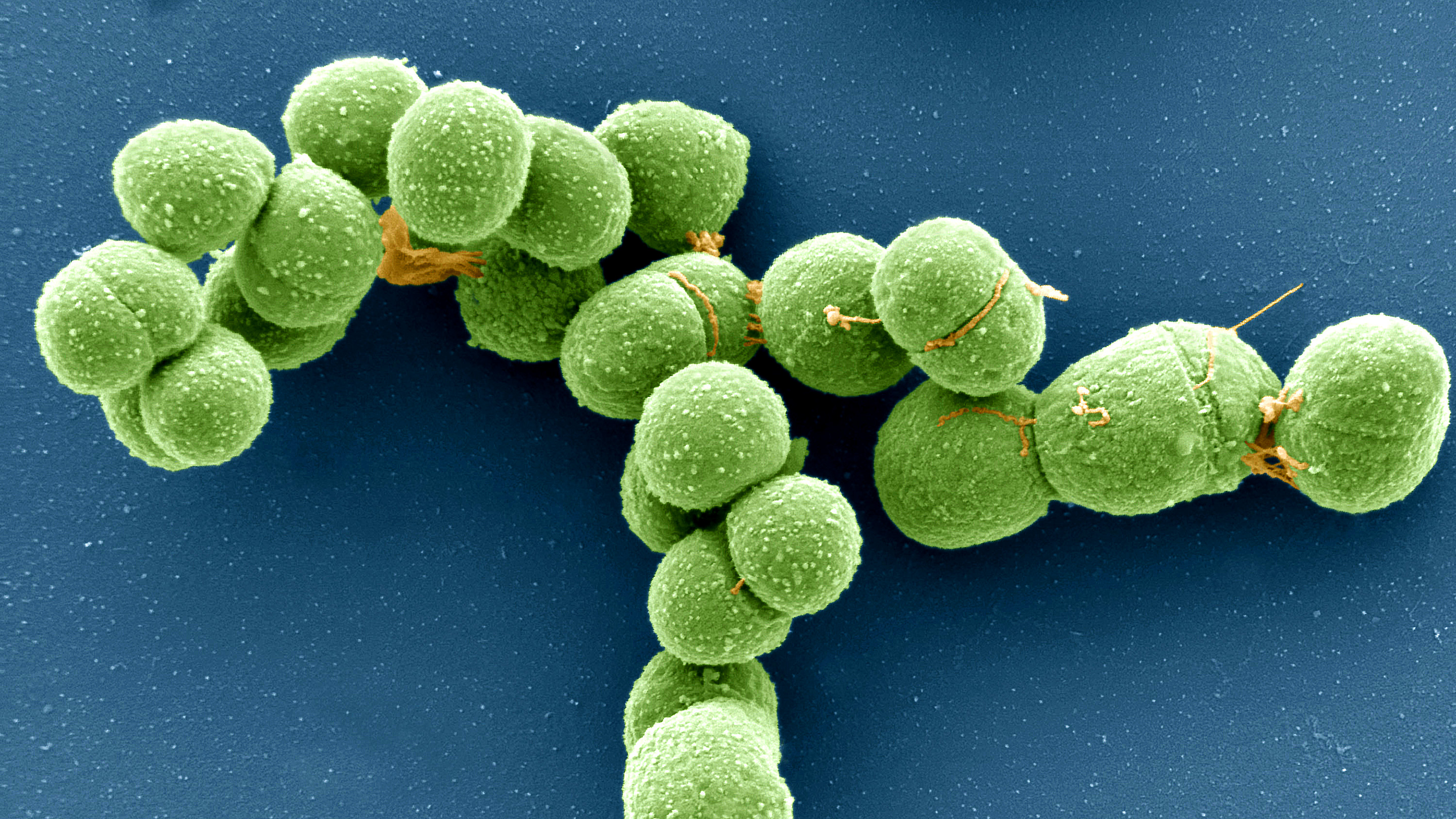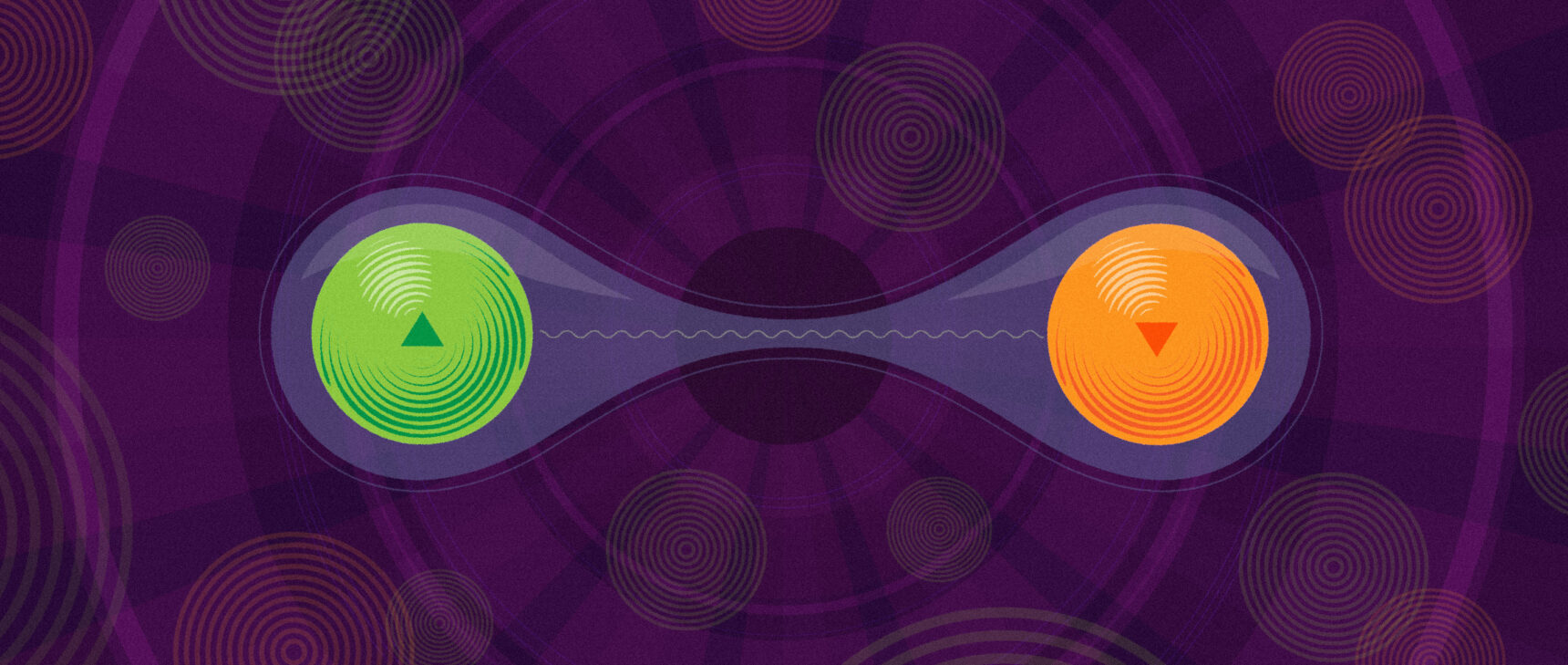Plasmid, Virus or Other? DNA ‘Borgs’ Blur Boundaries.

Some archaeal cells seem to carry unusual DNA outside their chromosomes that straddles the familiar definitions for genomic structures.
Eye of Science/Science Source
Introduction
When the microbiologist Jillian Banfield and her colleagues started combing through samples of mud from wetland environments three years ago, they had a specific goal in mind: to recover and analyze fragments of DNA from large bacteria-killing viruses. And they did. But they also found something unexpected. Some of the DNA in those samples wasn’t immediately recognizable as coming from viruses, archaea or other known cellular sources. Instead, the genomic structures seemed to be “distinct from anything that’s ever been seen before,” Banfield said.
In a new study posted earlier this month on the biorxiv.org preprint server, Banfield and her colleagues at the University of California, Berkeley announced the existence of these strange entities. (The work still needs to be peer-reviewed.) The researchers are upfront in acknowledging that what they have found could be some new type of giant virus, plasmid or bizarre chromosome. But they also suggest that the DNA could belong to something else entirely: what they have dubbed Borgs. Just as the alien species in Star Trek “assimilates” individuals into a hive mind, these unknown elements may integrate genes from their host cells into their own DNA, according to Basem Al-Shayeb, a graduate student in Banfield’s lab.
So far, other scientists generally seem reluctant to embrace the most extraordinary interpretation of what Borgs are. But they do agree that even the more mundane interpretations show how little is known about the categories of genetic diversity in nature. It highlights a need “to start thinking about different genetic entities [on] a continuum,” said Cédric Feschotte, a molecular biologist at Cornell University who was not involved in the new work. This kind of thinking could open up a world of possibilities for what we understand about the nature of the genome, how microbes function, and where to look for potential biotechnological applications.
When Banfield and her team first stumbled upon the unfamiliar DNA sequences, they were “stunned to find these elements that were over 900,000 bases long,” Al-Shayeb said. “And the majority of the genes that were encoded on there were completely unknown.” This left the researchers relatively few genetic clues to what the Borgs were, or what they might be doing.
Their analysis revealed that the gigantic sequences reside in a group of “methanotrophic” archaea, which metabolize methane. The sequences seemed to be inside the cells but separate from the host’s genome. Yet that only deepened the mystery because the elements had a paradoxical combination of features that made them hard to categorize. The DNA sequences couldn’t be part of the normal archaeal genome: Their base pair composition was too different, and they were linear, not circular like archaeal chromosomes. But they were also larger than extrachromosomal types of DNA like plasmids and viruses usually are. The biggest of the sequences, for instance, was longer than the genome of the largest known bacteriophage. In fact, the sequences were almost a third the size of the genomes of their host archaea. None of this seemed to align with what Banfield and her colleagues expected to see in known genetic elements like chromosomes, viruses or plasmids.
The contents of the sequences were also baffling. They seemed to carry genes from the archaea they inhabited — including genes involved in methane metabolism, ribosomal protein synthesis, cell wall structure, nitrogen utilization and extracellular electron transfer. Genes for many of these functions aren’t usually located in marginal elements outside the chromosomes of cells. In some cases the sequences seemed to have picked up pieces of DNA from each other. The researchers even saw hints that Borgs might sometimes get transferred between different archaea, which would allow them to carry genes from one host to another.
While Banfield has not yet ruled out the possibility that Borgs are a very large virus or plasmid, she hypothesizes that they could represent an entirely new type of genetic element — “not because they have any single feature that’s unique, but because of the combination of features,” she said. Perhaps, she added, they had once been independent archaea themselves, only to become a new flavor of endosymbiont, different from mitochondria or chloroplasts.
Other scientists are still less willing to go that far. “At this point, it could very well be a plasmid,” said Thijs Ettema, a microbiologist at Wageningen University in the Netherlands who did not participate in the study. “A new type of plasmid, and maybe a very exciting type of plasmid, but a plasmid nevertheless.” Linear plasmids have not been previously found in archaea, but in their size and genetic composition, Borgs look a lot like some massive linear plasmids discovered a decade ago in bacteria.
With that bacterial work in mind, “nothing stood out as strikingly unexpected,” said Mart Krupovic, a virologist at the Pasteur Institute in Paris, who agrees that Borgs are probably a new archaeal megaplasmid. But, he added, their discovery widens the diversity of genetic elements associated with some of the planet’s most mysterious microbes. Moreover, some plasmids can evolve to become indispensable to their host, transitioning into something that acts more like a chromosome. Given their size, the Borgs “might be on the way to becoming additional chromosomes for these archaea,” Krupovic said.
On the other hand, Feschotte sees parallels between the Borgs and giant viruses. “I’m going to let this [report] sink in a little bit more,” he said, but “honestly, I’d be very surprised if they’re not viral.” In that case, “it would be likely that they would define a brand-new class of viruses.”
Yet regardless of what Borgs turn out to be, their real significance is in underscoring “that the boundary between these different genetic entities is actually fluid,” Feschotte said. On the gradient or continuum of these elements, Banfield’s team “may have found something that’s a little bit intermediate between, say, a chromosome and a virus,” or a chromosome and a plasmid, he said. “And that would be cool.”
Krupovic echoed that point, suggesting that Borgs might be filling “a gap in the continuity” between parasitic, symbiotic and standard genomic features. “They add to our understanding of how diverse [genetic] elements can be, in terms of genome structure, in terms of size, in terms of organisms where they can be found,” he said. The Borgs’ existence could mean that many other DNA entities on this spectrum might yet be discovered, and that some might already be sitting in scientists’ collected data, just waiting to be unearthed.
If that’s true, archaea would be a good place to look for them because “that’s where so much of the craziness is,” Feschotte said. Al-Shayeb noted that, compared to eukaryotes and bacteria, archaea are understudied and underappreciated. “Some archaea don’t even divide into two cells; they divide into three. There are many, many mysteries in archaea,” he said.
In fact, part of why it has taken so long to uncover Borgs is that their host archaea, like nearly all known archaeal species, have never been cultured in a laboratory. Instead, Banfield and her colleagues relied on metagenomic methods, painstakingly stitching together trillions of tiny DNA fragments to reassemble complete sequences.
“We started out with mud and a tiny sequence of DNA, and we put together this story,” Banfield said. “It’s amazing what you can do these days with bioinformatics.”
But one limitation is that everything researchers know about Borgs is an inference from the genetic data; they haven’t been able to see or experiment on Borgs to confirm anything yet. They can’t even entirely rule out the possibility that the Borgs are illusory byproducts of the genome reconstruction techniques used. Going forward, further metagenomic analysis and additional attempts to culture their host archaea will be crucial to understanding what the sequences are and what they do.
Banfield, Al-Shayeb and their colleagues speculated in their paper that, because some Borgs carry genes for methane oxidation, the genetic elements might one day be useful for modifying cells to remove methane from the environment and help curb climate change. “But we’re not there yet,” Ettema said. Scientists will first need to determine whether the genes in the Borgs are even expressed before they can begin to examine potential applications and impacts on the environment.
Many other lines of research may be fruitful far sooner. “There’s a huge inventory of genes that remain to be explored” in the Borgs, Banfield said. “I’m sure that there’s a lot to be discovered — functions that will be uncovered that we have not even imagined yet.”
“What else is maybe not as obvious, but still hiding in plain sight?” Feschotte asked. For him, the new work on the Borgs is inspiring. “It makes me want to go out and want to look myself. I want to play, too.”



